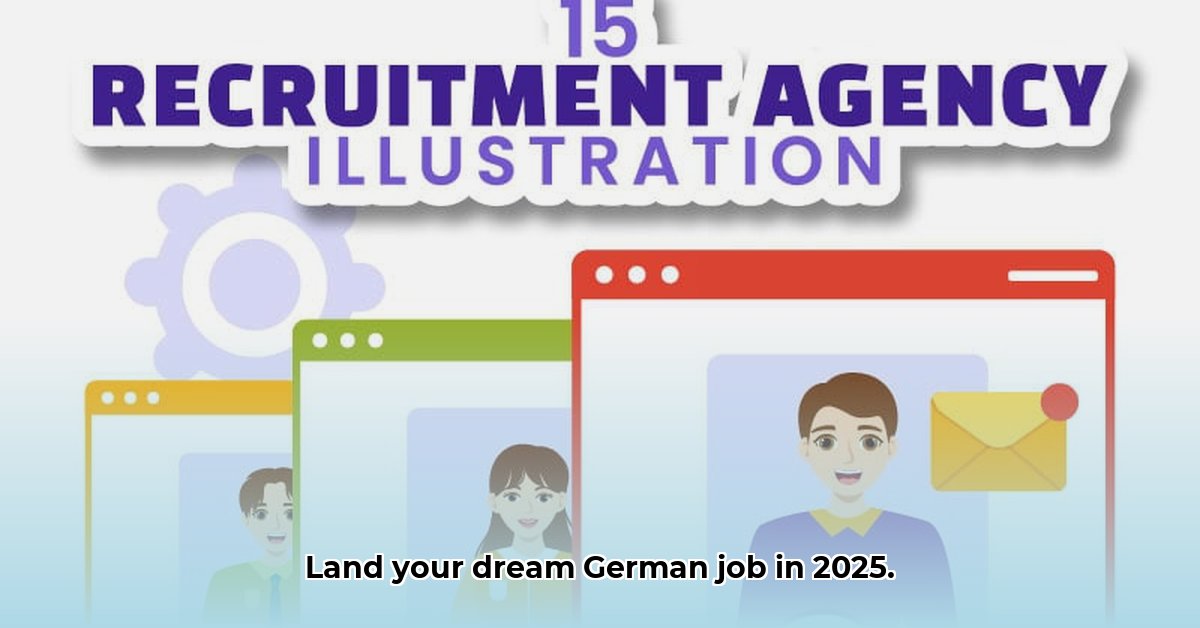
Finding top talent in Germany's competitive job market requires a strategic approach. This guide provides actionable steps for businesses of all sizes, recruitment agencies, and job seekers to navigate the complexities of the German recruitment landscape and find the right hiring strategy for 2025 and beyond.
Understanding the German Recruitment Market
Germany faces a talent shortage in key sectors, increasing competition for skilled workers. Navigating German labor law (including the Arbeitnehmerüberlassungsgesetz (AÜG) for temporary staffing) and data protection regulations (GDPR) is paramount. German business culture emphasizes reliability and thoroughness, influencing the hiring process. Are you prepared to meet these unique challenges?
Your German Hiring Options: A Step-by-Step Guide
Several effective recruitment methods exist in Germany. Let's explore each, detailing pros, cons, and step-by-step implementation guidance.
1. Direct Recruitment: In-House Hiring
This method involves handling the entire recruitment process internally.
Pros: Complete control, direct employer branding, cost savings (excluding advertising costs).
Cons: Time-consuming, requires internal expertise, potential for missed talent.
Step-by-Step Guide:
- Define needs: Clearly specify the role's requirements and responsibilities.
- Craft compelling job ads: Highlight company culture and benefits to attract top talent. Consider multiple platforms.
- Screen applications: Use a standardized process to efficiently filter candidates.
- Conduct interviews: Develop structured interview questions to asses skills and cultural fit.
- Check references: Verify credentials and experience.
- Extend offer: Negotiate compensation and benefits packages that comply with German labor laws.
- Onboarding: Integrate new hires successfully into the company culture.
2. Temporary Staffing (Arbeitnehmerüberlassung): Short-Term Solutions
Leverage a Personalvermittlungsagentur for short-term staffing needs.
Pros: Speed, efficiency, reduced administrative burden.
Cons: Less control over candidate selection, added costs, potential compliance complexities.
Step-by-Step Guide:
- Identify needs: Determine the specific skills and duration required.
- Choose a reputable agency: Verify the agency's compliance with AÜG and GDPR regulations.
- Clearly define roles and responsibilities: Provide the agency with detailed job descriptions.
- Review candidates: Assess presented candidates based on your requirements.
- Manage the assignment: Ensure seamless integration into your existing team.
- Evaluate performance: Provide feedback to the agency to improve future placements.
3. Headhunting: Executive Search
Engage specialist recruiters for senior-level positions.
Pros: Access to passive candidates, industry expertise, efficient candidate sourcing.
Cons: High costs, longer hiring times.
Step-by-Step Guide:
- Define requirements: Provide headhunters with a detailed profile of the ideal candidate.
- Select a headhunting firm: Choose a firm with experience in your industry and target role.
- Manage the search process: Offer feedback and collaborate closely with the recruiter.
- Evaluate candidates: Review recruiter-provided candidates and participate in interviews.
- Negotiate terms: Finalize compensation and benefits with the selected candidate.
4. Hybrid Approach: Combining Strategies
Utilize a combination of the mentioned methods to optimize hiring.
Pros: Flexibility, tailored solutions for various roles and needs.
Cons: Increased complexity in process management, potential for increased cost.
Step-by-Step Guide:
- Assess your needs: Identify which roles are best suited for each recruitment method.
- Develop a comprehensive strategy: Coordinate different elements to ensure a seamless process.
- Establish clear communication: Maintain open communication regarding progress and timelines.
- Monitor and adjust: Continuously evaluate the effectiveness of your approach and adapt as needed.
Choosing the Right Strategy: A Decision Framework
The optimal hiring strategy depends on several factors:
| Factor | Direct Recruitment | Temporary Staffing | Headhunting | Hybrid Approach |
|---|---|---|---|---|
| Cost | Medium to High | Low to Medium | High | Medium to High |
| Control | High | Low | Medium | Medium to High |
| Time-to-Hire | High | Low | Medium to High | Medium |
| Skill Level Needed | Varies | Varies | Typically High | Varies |
| Best Use Cases | Permanent Roles | Short-Term Projects | Executive Positions | Flexible Staffing Needs |
Risk Mitigation: Avoiding Common Pitfalls
Proactive risk management is crucial. Addressing potential issues early minimizes disruption:
| Risk Category | Mitigation Strategy |
|---|---|
| Budget Overruns | Create a detailed budget; negotiate transparent contracts. |
| Unexpected Delays | Set realistic timelines; engage with candidates proactively. |
| Compliance Issues | Seek expert legal advice; ensure adherence to all data protection laws. |
| Poor Candidate Fit | Use thorough screening processes; invest in training for interviewers. |
Conclusion: A Strategic Approach to German Hiring
Successfully recruiting in Germany requires a carefully considered approach tailored to your specific needs. This guide provides the framework you need to navigate the complexities and find the right talent for your organization. By understanding the various options, conducting thorough planning, and addressing potential challenges proactively, you can build a highly skilled and productive team.